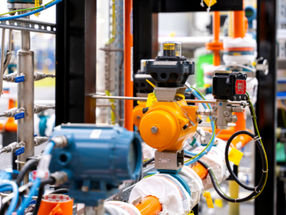Further growth for bioplastics
Advertisement
Polylactic acids, starch blends, cellulose, and other bioplastics achieve significantly higher growth rates than conventional standard plastics made of mineral oils or natural gases. „Bioplastics can be used in a growing number of application areas,“ explains Oliver Kutsch, CEO of market research institute Ceresana. With its newest study, Ceresana has examined the world market for "green" polymers for the fifth time already. Analysts predict their future development to remain dynamic: revenues generated with bioplastics are expected to reach approx. USD 4.4 billion by 2026.
“Bio” is not always compostable
Two groups of materials are called bioplastics, although they are not necessarily identical: there are biodegradable plastics can be composted, as well as bio-based plastics that are made of renewable resources but are not biodegradable. Biodegradable plastics, such as polylactic acids (PLA) and polymers on the basis of cornstarch, reached a market share of 56% of the total market for bioplastics in 2018. Ceresana predicts volume growth of 7.1% per year up until 2026 for this product group. Growth regarding bio-based plastics such as polyethylene, PET, or PA made of sugar cane, which are not biodegradable, is expected to be weaker, with 5.1% per year.
Packaging is the main application
This study by Ceresana analyzes the development of bioplastic usage in various sales markets in detail. Demand is subdivided into the categories rigid and flexible packaging, consumer goods, automotive and electronics, and other applications. The most important sector for sales of bioplastics in 2018 was the packaging industry – more than 60% of bioplastics were processed to bags, sacks, and other types of packaging. However, Ceresana expects the highest percentage increase in the future for the category automotive and electronics with 8.4% per year.
Manufacturers and processors of bioplastics are facing great challenges: prices, availability, and quality need to be able to compete with fossil resources. Alternatively, they must offer added value in order to justify the price difference to consumers. Recycling and composting are an advantage for many applications. However, the existing infrastructure of disposal companies plays a decisive role in this respect: problems arise when plants are not designed to separate bioplastics or when they are unable to biodegrade them. Temperatures that are needed for quick composting of bioplastic bags are, for example, nor always reached.
Most read news
Topics
Organizations
Other news from the department business & finance

Get the chemical industry in your inbox
By submitting this form you agree that LUMITOS AG will send you the newsletter(s) selected above by email. Your data will not be passed on to third parties. Your data will be stored and processed in accordance with our data protection regulations. LUMITOS may contact you by email for the purpose of advertising or market and opinion surveys. You can revoke your consent at any time without giving reasons to LUMITOS AG, Ernst-Augustin-Str. 2, 12489 Berlin, Germany or by e-mail at revoke@lumitos.com with effect for the future. In addition, each email contains a link to unsubscribe from the corresponding newsletter.





























































